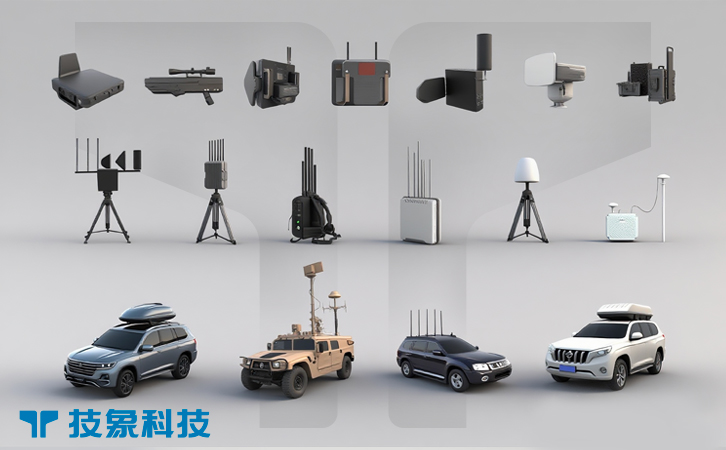The drone proliferation in 2025, with over 6 million UAVs in global use, has driven the need for elevated defenses, as rogue drones exploit low altitudes to evade ground-based sensors. Balloon-based counter-drone systems, utilizing tethered aerostats equipped with radars, cameras, and jammers, provide high-altitude surveillance and neutralization, offering wide-area coverage for critical sites like borders, events, and military bases. These systems elevate sensors to 1,000 feet or more, extending detection ranges and minimizing urban clutter interference. Unlike fixed towers or high-cost aircraft, balloons are cost-effective, deployable, and persistent, making them ideal for long-term monitoring in remote or contested areas. This article explores the persistent drone threat, the mechanics of balloon-based systems, their real-world applications, and the challenges and future potential of this aerial counter-UAV platform.
I. The Persistent Drone Threat and Need for Elevated Systems
Rogue drones maintain persistent threats, loitering for hours to conduct surveillance or attacks, with incidents like prolonged incursions over U.S. military bases rising 35% in 2024, leading to operational halts and security breaches. In civilian contexts, drones linger over events or infrastructure, as seen in 2025 European festival disruptions, costing millions. Military risks include endurance UAVs in conflicts like Ukraine, where they outlast ground defenses.
Ground-based systems struggle with line-of-sight limitations in hilly or urban terrain, while mobile units lack constant elevation. Balloon-based systems solve this by elevating sensors for 360-degree views, extending ranges to 20 km or more. Their role is crucial for persistent monitoring, as demonstrated in 2025 U.S. border trials where balloons detected smuggling drones over vast areas. The DEFENSE Act, enacted in September 2025, supports elevated platforms for infrastructure protection, emphasizing their importance in countering the endurance and stealth of drone threats through heightened vigilance.
II. Mechanics of Balloon-Based Counter-Drone Systems
Balloon-based systems use helium-filled aerostats tethered to ground stations, elevating payloads of sensors and effectors to heights of 500-2,000 feet. Radar antennas detect drones via Doppler shifts, RF sensors intercept signals, and optical/IR cameras provide visual confirmation, all fused by AI for threat analysis. Systems like Persistent Systems’ aerostat platforms integrate these with jammers or lasers for disruption, covering areas up to 100 square km.
The mechanics involve balloon inflation, payload ascent, and data transmission via fiber-optic tethers for real-time feeds to command centers. AI processes multi-sensor data, predicting drone paths and automating responses like targeted jamming. Advantages include extended persistence (weeks without refueling), wide coverage, and cost-effectiveness ($500,000 for basic setups). Limitations include vulnerability to weather (high winds) and tether constraints, restricting mobility. In 2025, advancements in lightweight materials and autonomous stabilization have improved reliability, making these systems a key element in elevated C-UAS strategies.
III. Applications and Real-World Deployments
Balloon-based systems are deployed for persistent defense in civilian and military settings. At borders, like the U.S.-Mexico line, aerostats monitor smuggling drones, detecting and jamming them over remote terrains, as in 2025 CBP operations. Events use tethered balloons for overhead surveillance, preventing intrusions during the 2025 Olympics with real-time alerts.
In military applications, balloons protect bases from loitering threats. The U.S. Army’s 2025 Middle East deployments featured aerostats neutralizing reconnaissance swarms, enhancing perimeter security. European forces have used them in maritime patrols, countering UAVs over ships. The Counter UAS Technology USA Conference in December 2025 showcased these, emphasizing hybrid sensor payloads for layered defense. Success depends on weather-resistant designs and integration with ground units, but their elevation makes them indispensable for wide-area monitoring.
IV. Challenges and Future Prospects
Balloon-based systems face deployment, environmental, and cost challenges. High winds or storms can ground them, requiring reinforced tethers, while setup times (hours) limit rapid response. Costs, starting at $500,000, include maintenance for helium and payloads.
Regulatory hurdles involve FAA approvals for airspace use, though the September 2025 DEFENSE Act streamlines for security. Ethical concerns include privacy from elevated surveillance, mandating data limits under ITU guidelines. Future prospects are promising, with 2025 innovations in solar-powered balloons and AI for autonomous operation. By 2030, the counter-UAS market grows, with aerostats leading for persistent defense. Policy support ensures ethical use, positioning balloon-based systems as a foundation of elevated security.
Conclusion
Balloon-based counter-drone systems offer elevated, persistent protection against rogue UAVs, providing wide-area detection in 2025’s drone-vulnerable skies. Their ability to integrate sensors at height makes them ideal for borders, events, and bases, complementing ground C-UAS tools. Despite challenges like weather and costs, real-world successes and innovations highlight their value. As threats persist, these systems—supported by reforms—will remain vital in layered defenses. By overcoming hurdles, stakeholders can deploy this technology to secure airspaces, ensuring vigilance in a drone-dominated era.



